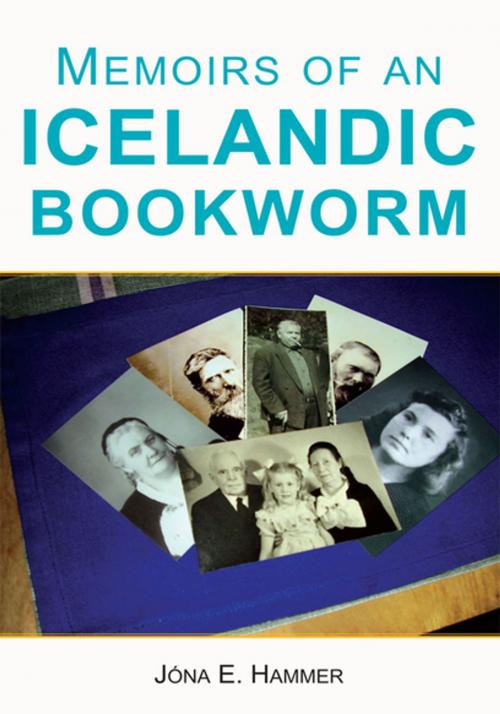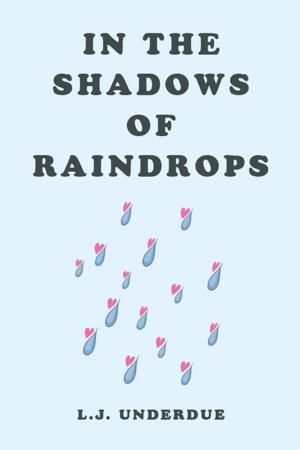| Author: | Jóna E. Hammer | ISBN: | 9781462842490 |
| Publisher: | Xlibris US | Publication: | July 18, 2006 |
| Imprint: | Xlibris US | Language: | English |
| Author: | Jóna E. Hammer |
| ISBN: | 9781462842490 |
| Publisher: | Xlibris US |
| Publication: | July 18, 2006 |
| Imprint: | Xlibris US |
| Language: | English |
Memoirs of an Icelandic Bookworm is only partly a memoir. More than half the volume consists of Icelandic folktales, many of which have never been translated into English before. These tales are uniquely presented here as part of a fabric of life extending from a long-ago past through times affected by the Second World War and to the present.
The book is a first-hand and humorous account of Icelandic culture and an Icelandic childhood. In the memoir-sections, the bookworm of the title is growing up in a small town in Northern Iceland; her emerging world-view is expanded by family-influences or challenged by sojourns into Icelandic and international literature. Her family is memorably represented, for example by her grandmother, the robust Stefana, who speaks in verse and learns to dance rockn roll, and the white-haired patriarch Jn, who steps in to save the family home from burning and introduces his great-granddaughter to an ancient feminist folktale.
The memoirs mostly describe the 1940s and 50s, but the author is constantly looking back, beyond her own memories and even the memories of her great-parents, toward an older culture, preserved in the folktales and exerting its influence through the centuries to touch her own childhood. On occasion, the authors cultural associations reach even further back, to the times of the Icelandic sagas; at other times, with periodic returns to her current vantage point in the 21st century, she touches down in the more recent past for a humorous look at Laxness or up-to-date cultural developments.
As a writer of memoirs, the author makes two general observations. The first one is that children should be introduced to imaginative literature as early as possible. Although this is not a new idea, it is illustrated here with an example of highly auspicious conditions: the bookworm and her peers grow up in a cultural climate where literature and poetry are integrated into daily life. The authors second observation is that a small and seemingly insular society may actually contain a great deal of cultural and literary sophistication, as she shows in her descriptions of daily small-town life in Northern Iceland.
The sixty-some folktales which occupy the larger part of the book are introduced as flashbacks to earlier times. Reflecting the national past and narrated by long departed country-people, the folktales run through the bookworms own present and link her living family to long-ago forebears. The human characters in these colorful tales are just like the narrators themselves: farmers and their wives, serving maids, clergymen, bishops, or hired hands: a familiar mixture in any farming society. The non-humans are a sinister lot, ranging from The Evil One himself through ghosts and ogres with whom ordinary folk must struggle as best they can. In addition, the ever-present elves are a law unto themselves: loyal as friends but lethal as foes. Being an Icelander and thus receptive to mysticism, the bookworm has ample contact with the supernatural, partly through the folktales but also as elements of daily life. Real people gifted with second sight are still commonplace in the girls own times; in fact, her family owes its very existence to the advice of such a seer. In addition, the bookworms world teems with an international cast of fictional and fantastic characters. Dickenss Mr. Bumble, Anna of Green Gables, Alice in Wonderland, a nameless drunken fisherman (courtesy of Halldr Kiljan Laxness), and the Hunchback of Notre Dame, among others, make cameo appearances next to child-stealing elf-women, man-devouring giantesses, and a dreaded ghost-monster called Thorgeirs Bull.
The first folktale, a horrific account of a legendary sorcerer, is presented by itself both as a preview of the dark supernatural mysteries in store for the reader and as a preview of the fascination and excitement such readin
Memoirs of an Icelandic Bookworm is only partly a memoir. More than half the volume consists of Icelandic folktales, many of which have never been translated into English before. These tales are uniquely presented here as part of a fabric of life extending from a long-ago past through times affected by the Second World War and to the present.
The book is a first-hand and humorous account of Icelandic culture and an Icelandic childhood. In the memoir-sections, the bookworm of the title is growing up in a small town in Northern Iceland; her emerging world-view is expanded by family-influences or challenged by sojourns into Icelandic and international literature. Her family is memorably represented, for example by her grandmother, the robust Stefana, who speaks in verse and learns to dance rockn roll, and the white-haired patriarch Jn, who steps in to save the family home from burning and introduces his great-granddaughter to an ancient feminist folktale.
The memoirs mostly describe the 1940s and 50s, but the author is constantly looking back, beyond her own memories and even the memories of her great-parents, toward an older culture, preserved in the folktales and exerting its influence through the centuries to touch her own childhood. On occasion, the authors cultural associations reach even further back, to the times of the Icelandic sagas; at other times, with periodic returns to her current vantage point in the 21st century, she touches down in the more recent past for a humorous look at Laxness or up-to-date cultural developments.
As a writer of memoirs, the author makes two general observations. The first one is that children should be introduced to imaginative literature as early as possible. Although this is not a new idea, it is illustrated here with an example of highly auspicious conditions: the bookworm and her peers grow up in a cultural climate where literature and poetry are integrated into daily life. The authors second observation is that a small and seemingly insular society may actually contain a great deal of cultural and literary sophistication, as she shows in her descriptions of daily small-town life in Northern Iceland.
The sixty-some folktales which occupy the larger part of the book are introduced as flashbacks to earlier times. Reflecting the national past and narrated by long departed country-people, the folktales run through the bookworms own present and link her living family to long-ago forebears. The human characters in these colorful tales are just like the narrators themselves: farmers and their wives, serving maids, clergymen, bishops, or hired hands: a familiar mixture in any farming society. The non-humans are a sinister lot, ranging from The Evil One himself through ghosts and ogres with whom ordinary folk must struggle as best they can. In addition, the ever-present elves are a law unto themselves: loyal as friends but lethal as foes. Being an Icelander and thus receptive to mysticism, the bookworm has ample contact with the supernatural, partly through the folktales but also as elements of daily life. Real people gifted with second sight are still commonplace in the girls own times; in fact, her family owes its very existence to the advice of such a seer. In addition, the bookworms world teems with an international cast of fictional and fantastic characters. Dickenss Mr. Bumble, Anna of Green Gables, Alice in Wonderland, a nameless drunken fisherman (courtesy of Halldr Kiljan Laxness), and the Hunchback of Notre Dame, among others, make cameo appearances next to child-stealing elf-women, man-devouring giantesses, and a dreaded ghost-monster called Thorgeirs Bull.
The first folktale, a horrific account of a legendary sorcerer, is presented by itself both as a preview of the dark supernatural mysteries in store for the reader and as a preview of the fascination and excitement such readin















